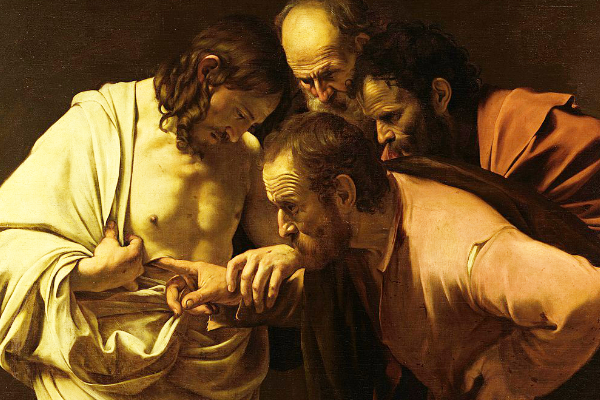The Apostle’s Foe

This three-dimensional world is inherently flawed and cannot be the creation of a supremely benevolent God. How could a truly good deity be responsible for a world so rife with suffering and imperfection? Instead, the Supreme God brought forth the intermediate beings known as Aeons, who exist within the Pleroma, the divine and spiritual realm of ultimate truth. Among these Aeons is Sophia, the embodiment of wisdom, whose presence represents the profound mysteries of divine knowledge.
Despite being the goddess of wisdom, Sophia’s curiosity leads her to make grave mistakes, resulting in her expulsion from the Pleroma. In her isolation, she uses her knowledge to create a lesser deity known as the Demiurge. This Demiurge is characterized by ignorance, greed, and arrogance. Oblivious to the existence of the Supreme God and the divine realm of the Pleroma, the Demiurge thought that he is the only God and the absolute power. Driven by this delusion, it creates a legion of subordinate beings, the Archons, and together they fashion the physical, three-dimensional world that we perceive today—an imperfect reflection of the spiritual truth.
Human beings, too, were formed within this flawed, three-dimensional world. Though human nature is marked by imperfection, within every individual resides a spark of the divine—a sacred fire that represents the true essence of goodness. It is only through nurturing and awakening this inner flame that humanity can find salvation and transcend the inherent darkness of the material world.
Burdened by the consequences of her actions, Sophia deeply regrets creating the Demiurge. In an effort to amend her mistake, she continues to work behind the scenes, offering her hidden wisdom to humanity. Through this wisdom, she strives to awaken the divine spark within each soul, guiding them toward redemption and, ultimately, a return to the truth of the divine.
Sophia is not alone in her efforts; many other Aeons from the Pleroma descend to Earth, sharing hidden wisdom with humanity and guiding them toward redemption. Among these divine messengers is Jesus Christ. However, no pure Aeon can take on a corrupt, material human form, as it would be incompatible with their nature. Thus, Jesus did not possess an ordinary human body; what people perceived as his physical form was, in fact, an illusion—a mystical projection that allowed him to interact with the world.
It was not a physical body in the conventional sense; rather, it was an illusionary form that allowed Him to reveal Himself to the people. Consequently, both His crucifixion and resurrection were also part of this divine illusion—symbolic manifestations intended to convey profound spiritual truths rather than physical events.
Did I just blow your mind with all this?
In the first century, the early church faced constant challenges from a dark and pervasive belief system. This was Gnosticism, which was the dominant religious movement in Asia Minor during that era. Central to Gnostic teachings was the argument that the Demiurge—created by Sophia—was actually the Lord depicted in the Old Testament.
After the third century, as Christianity became integrated into the political landscape, it actively sought to suppress and eradicate Gnosticism. Yet today, this ancient belief system has begun to re-emerge, blending with modern ideas and presenting itself under the guise of New Age wisdom, once again gaining a foothold in contemporary spiritual discourse.
Gnosticism was not merely a singular, man-made religion; it was a complex synthesis that drew upon ancient Greco-Roman traditions and absorbed various contemporary beliefs. This adaptability allowed it to incorporate the rapidly spreading Christianity of the time, acknowledging Christ as an Aeon while simultaneously denying the reality of His physical incarnation. To Gnostics, Christ’s body was merely an illusion.
This fundamental divergence is why John begins his epistle with the declaration, “We declare to you the word of life, which our hands have touched” (1 John 1:1). By emphasizing the tangible, experiential nature of Christ, John sought to counter the Gnostic claim and affirm the reality of Christ’s physical presence among humanity.
Moreover, in 1 John 4:3, he wrote, “Any spirit that does not acknowledge Jesus Christ as having come in the flesh is not from God; this is the spirit of the antichrist, of which you have heard that it is coming.” This raises an important question: why does our foe, the antichrist seek to obscure the reality of Christ’s physical incarnation from the eyes of humanity? Understanding this is crucial, as our true success hinges on recognising what is being concealed from us. By unearthing this truth, We can face forces that try to hinder our spiritual progress.
There are two key reasons why our adversary, the Antichrist, seeks to obscure the reality of Christ’s incarnation from us. First, salvation is rooted in faith in the suffering and death that Christ endured in the flesh. By concealing this truth, the Antichrist aims to prevent humanity from grasping the essence of salvation, effectively blocking access to the transformative power that comes from understanding the significance of the Christ’s suffering in our lives.
Second, the Father sent His Son, the second person of the Trinity, to Earth in human form, guiding Him through death, resurrecting Him, and elevating Him to sit at His right hand. Now, He is enthroned in a glorified human body, serving as the representative of humanity before the Father. This means that within the Trinity, the second one is the representative of man. He seeks to draw others into this relationship. If only humanity could fully grasp this profound truth…
This is precisely why the Antichrist, along with the religions and philosophies he has spawned, works tirelessly to prevent humanity from uniting with God. These teachings often proclaim that human nature is inherently depraved and evil, advising believers to “not touch, not taste,” as they impose strict restrictions like asceticism. This mindset creates a barrier between God and humanity, akin to the veil that was torn from top to bottom at Calvary. For fleshly man to be united with the Divine, it is essential to understand and embrace the reality of the Son of God who came in the flesh. Only through this comprehension can true communion with God be achieved.
This is why the apostles were resolute in their mission to preach only Christ crucified (1 Corinthians 2:2). Our victory hinges on contemplating what the enemy seeks to obscure from us. Let our focus be solely on the Son of God, who came in the flesh and was crucified! The profound triumph that the Church will attain over the Babylonian world system established by the Antichrist begins with this understanding. By centering our hearts and minds on Christ’s sacrifice, we empower ourselves to overcome the forces that stand against us.



